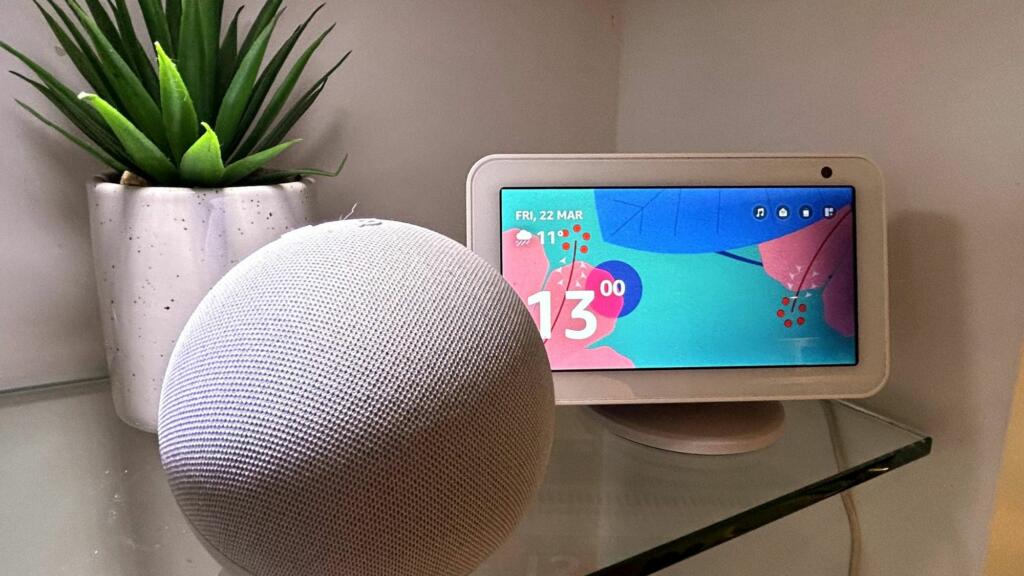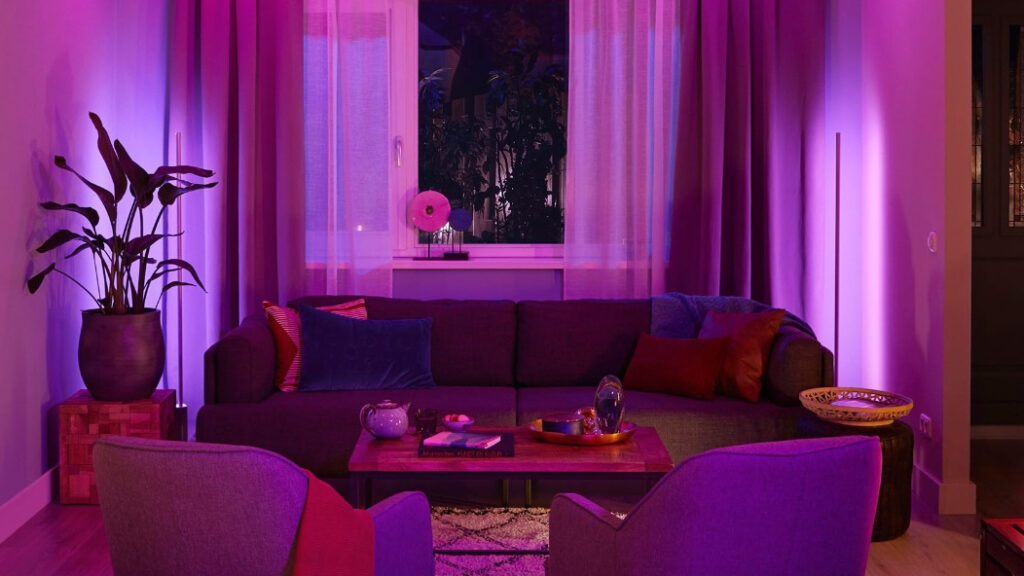
Smart speaker vs smart display: what’s the difference?
David Nield
Smart speakers are great, but smart displays truly take the home hub concept to the next level.
Most people are now familiar with the concept of a smart speaker. Equipped with built-in microphones and a voice assistant supplied by the likes of Google or Amazon, they can answer your queries, play music, tell you what the local traffic and weather are, and even switch on and control smart devices in your home.
All well and good, but the main limitation of smart speakers, of course, is that your interactions with them are audio-based.
Wouldn’t it be great if your smart speaker could show you – and allow you to interact with – information and services, as well as speaking back to you? In a nutshell, that’s exactly what a smart display does.
Most people are now familiar with the concept of a smart speaker. Equipped with built-in microphones and a voice assistant supplied by the likes of Google or Amazon, they can answer your queries, play music, tell you what the local traffic and weather are, and even switch on and control smart devices in your home.
All well and good, but the main limitation of smart speakers, of course, is that your interactions with them are audio-based.
Wouldn’t it be great if your smart speaker could show you – and allow you to interact with – information and services, as well as speaking back to you? In a nutshell, that’s exactly what a smart display does.
 Credit: Google
Credit: GoogleA virtuous mash-up of a smart speaker and a conventional touchscreen tablet, smart displays differ from the latter in two key respects. Firstly, they are generally designed to remain plugged into mains power. Secondly, they usually stay in one place, whether that’s the kitchen, bedroom or living room.
Amazon and Google are the two major brands that produce smart displays. While you can buy Meta Portal from third party sellers, the smart display is no longer in production. Meta does plan to maintain the system software with critical bug fixes and security patches though, so if you do buy one, they’ll still be properly functional.
Setting up and using a smart display involves pretty much the same steps as setting up a smart speaker. You download an app to your connected mobile device or computer, plug in your smart display, connect to your network and then proceed with configuration.
The short answer is absolutely everything that a smart speaker can, but with the added bonuses of video enhancement and touchscreen control.
So, instead of Alexa or Google Assistant just telling you what the weather in your part of the world is going to be, a smart display can also give you a detailed look ahead as to what the weather’s going to be like for the next week.
When you ask a smart display to fire up your favourite subscription music service and play back that Bowie song you love, you can now see what the rest of the tracks on the album are, as well as suggested playlists and alternative artists.
From a sonic point of view, smart displays usually offer better sound quality than you’d get from the cheapest smart speakers. This is mainly because they’re physically larger and can accommodate larger drive units and beefier amplifiers.
 Credit: Amazon
Credit: AmazonWith content-heavy services, it’s a lot easier to navigate options when you can see them.
In the kitchen, for instance, you can ask for a smart display to show a recipe so you can follow step-by-step how to cook tonight’s cordon bleu masterpiece.
Handily, if you have home automation devices dotted around the house, many smart displays allow you to control those, too. So, if you want to switch on your Philips Hue smart lighting system, or see how long it is before your Samsung washing machine finishes its cycle (via the SmartThings app), there’s a smart display out there that will allow you to do that.
Their built-in video capability also allows smart displays to replicate some of the dedicated functionality we’ve all now come to expect from tablets and smartphones.
For instance, it’s possible to watch streaming video services such as Netflix, YouTube or Amazon Prime on a smart display (depending on the model), as well as receive video alerts from your wireless doorbell or security cameras.
 Credit: Meta
Credit: MetaMany smart displays also have high quality front-facing video cameras, so you can record and send video messages or have live, two-way video calls with family, friends and work colleagues.
At its most basic level, it’s also possible to use smart displays as digital photo frames – an ideal way to show off and share all your latest pictures with loved ones.
Here are the key criteria to look out for:
Essentially, there are just two players in the voice assistant universe: Google (Assistant) and Amazon (Alexa). You may be familiar with at least one of the ecosystems associated with those, perhaps because you already have an Amazon or Nest security system.
Make sure you buy a smart hub that supports the particular smart home tech you already have (or intend to invest in).
As a rule, smart displays tend to be on the smaller side compared to most touchscreen tablets. Having said that, there are still a wide variety of options, ranging in size from 5.5in (14cm) for the Amazon Echo Show 5 to all the way up to a whopping 15in (38cm) for the Echo Show 15.
 Credit: Amazon
Credit: AmazonObviously essential if video calls are a priority for you or you’d like to use your smart display for home monitoring.
Predictably, while the default streaming music/video services supported are those bankrolled by each device’s maker, it’s not hard to configure most smart displays to play back other services, such as Netflix, Apple Music and Spotify.
Amazon has the widest selection of smart displays on the market, ranging from the entry-level Echo Show 5 with its 5-inch screen and accessible price point, all the way up to the picture frame-like Echo Show 15 with its 15-inch display and wall-hanging design.
The Echo Show 10 meanwhile features a rotating display which can follow you round the room (yes really), attached to a cylindrical speaker stand.
If you want something that fits in the middle, the 8-inch screen on the Echo Show 8 is a happy compromise of size and price.
Google’s range of smart displays is small, with just two models on offer. The smaller, Nest Hub features a 7-inch display, as well as sleep sensors, making it an ideal companion for your nightstand.
Meanwhile the Nest Hub Max features a larger, 10-inch display, designed to be a more prominent fixture in your home. It works well in the kitchen when it comes to showing you recipes and setting timers, or in reception rooms where it can act as a digital photo frame, speaker and video player.
As we’ve mentioned, Meta’s Portal line of four smart displays are no longer being produced, so while some third party sellers may have stock left, once they’re gone that’s it.
While the Portal 10, Portal Go and Portal Plus are similar in design to their Nest Hub and Echo Show counterparts, the Portal TV doesn’t include a display
Instead it’s designed to make a display you already own (your TV, clue’s in the name) smarter. It’s geared towards video calls more than anything, but it also provides voice assistance and other features.

Written by Kulwinder Singh Rai
Published: Updated:
Kulwinder Singh Rai is a contributor to Saga Exceptional. Kulwinder has been a journalist, editor and public relations consultant for more than 30 years, specialising in technology, home entertainment and cars. During those decades he’s tested, benchmarked and written about hundreds of products for both media and manufacturers, sifting out the wheat from the chaff.
At the tail end of the last century he was there for the birth of home cinema, the arrival and transformation of the first PDAs into smartphones, as well as the invention of the digital camera. Over the years, he’s written for the likes of The Sunday Times, The Daily Telegraph and the London Evening Standard, as well as countless technology and motoring media.
When he’s not scribbling about tech or testing the latest gear, Kulwinder can usually be found immersed in the latest sci-fi blockbuster, inevitably being played far too loudly via his Dolby Atmos home cinema system, or out for a relaxing walk with his ever-faithful companion, Barney the Poochon.

David Nield

Jayne Cherrington-Cook

Kulwinder Singh Rai

Carrie Marshall